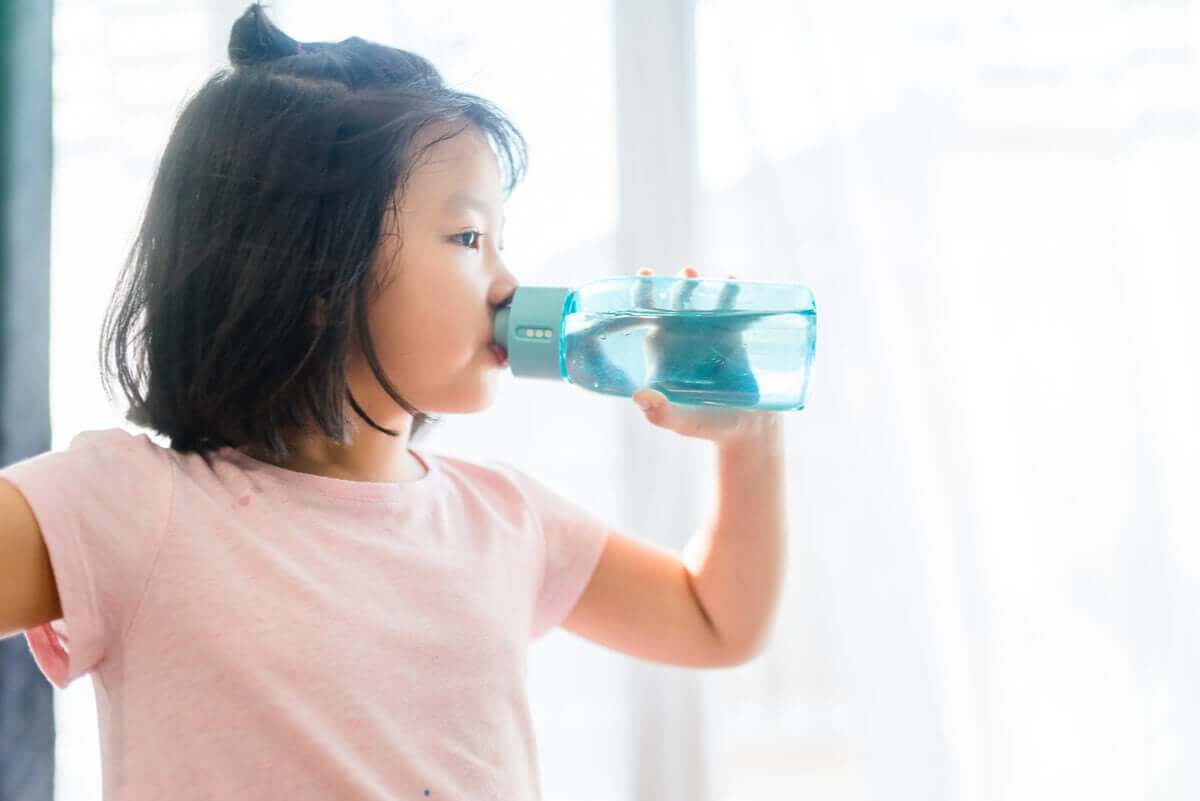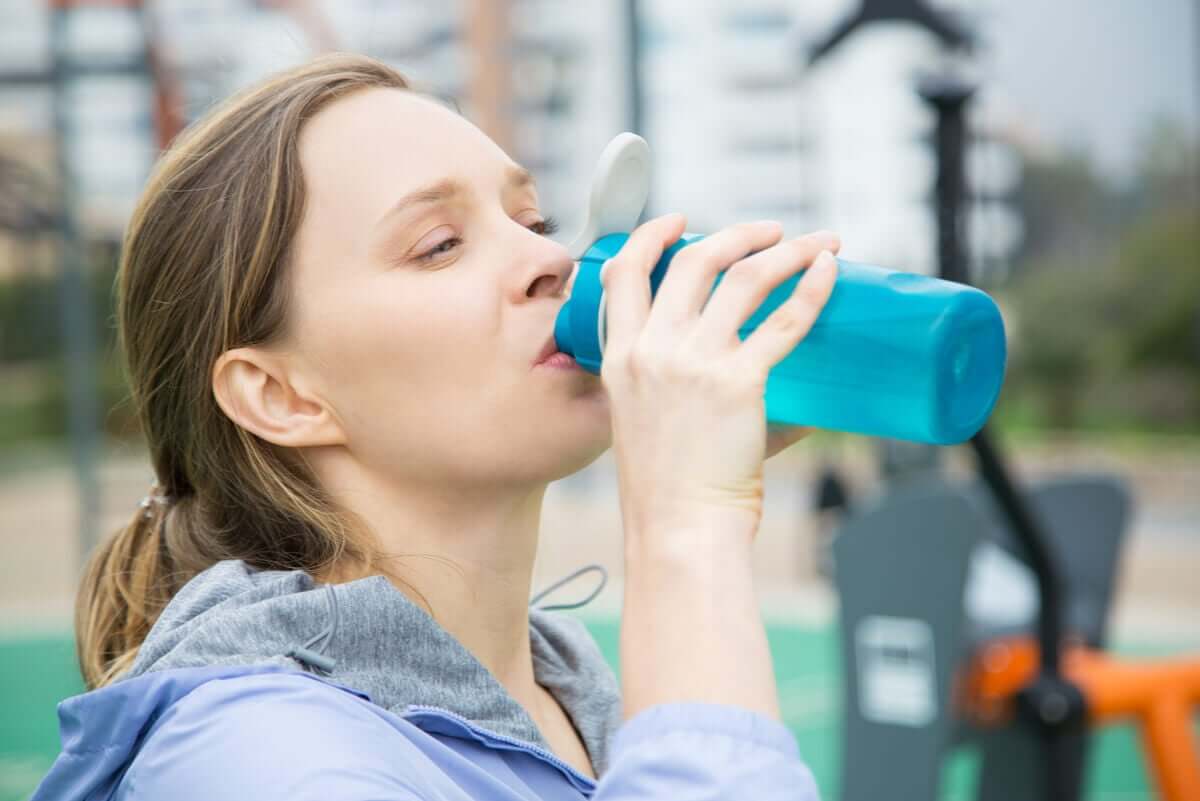What Is Hydro-Electrolytic Balance?


Written and verified by the nutritionist Saúl Sánchez Arias
The hydro-electrolytic balance is a concept that aims to maintain a correct balance between hydration and mineral supply. A defect in either of these two components can cause harmful effects on the body. Certain mineral deficiencies, such as sodium (hyponatremia), could even be fatal.
For this reason, we’re going to explain all about the most important functions regarding our body’s main electrolytes. We’ll also give you a series of recommendations to ensure that you consume the amount you need, thus preventing imbalances.
Electrolytes
Electrolytes are ionized minerals that perform several functions in the human body. Many of them relate to the maintenance of osmotic balance or the transmission of the nerve impulse.
Let’s have a look at the most important ones.

To get to know more: Mineral Salts: What They Are and Where to Find Them
Sodium
Sodium is one of the most abundant minerals around. Its deficit, as we mentioned before, causes a disorder known as hyponatremia. Sodium is an essential nutrient in the transmission of the nerve impulse, and our lives depend on it.
Furthermore, it has an important role in maintaining our blood pressure, as shown by research published in Nutrients. Sodium is a water-hungry compound, so it binds to it, thus increasing the tension when consumed in excess.
Fortunately, almost all the food in our diet contains sodium. For this reason, it’s quite hard to actually suffer from a deficiency. In fact, this is usually only probable in cases of excessive sweating, and hot and humid environments.
Endurance athletes who compete in hot environments should monitor their intake of the mineral. They can do this by drinking beverages with precise measures of this mineral.
Calcium
Calcium is the most abundant mineral in the human body. It’s an important part of our bones, increasing their density and reducing the risk of fractures. This mineral becomes fundamental when the objective is to prevent bone demineralization caused by menopause, as current scientific evidence affirms.
Besides, this nutrient also has a role in the transmission of the nerve impulse and in muscle contractility, both cardiac and skeletal. For this reason, it’s essential to ensure adequate levels of it in the body.
You may also be interested in: How to Prepare a Calcium-Rich Remedy to Prevent Osteoporosis
Potassium
Potassium is involved in the transmission of nerve impulses, but it also regulates blood pressure by exerting a hypotensive effect, contrary to that of sodium. According to a study published in the Journal of Clinical Hypertension, regular intake of the mineral helps to reduce blood pressure, so we can recommend it to people with this condition.
How to maintain the hydro-electrolytic balance?
To maintain the hydro-electrolytic balance, in the first place, it’s essential to guarantee adequate water intake. You don’t need to wait until you’re thirsty to consume liquids, because the body only activates this mechanism when a significant loss has already occurred.
It’s advisable to drink small amounts of fresh water every so often and avoid carbonated drinks or soft drinks to fulfill this function. It has been demonstrated that the habitual consumption of sugars is harmful to health.
Guarantee your mineral intake to maintain the hydro-electrolytic balance
To improve your mineral intake, we recommend that you salt the food a little more than usual when exercising in hot conditions. By doing so, you reduce the risk of hyponatremia.
In the case of people with a sedentary lifestyle, the intake of sodium should be adjusted to their dietary needs. However, it should be limited in the case of arterial hypertension.
The best thing is to consume a varied and balanced menu, especially one that’s rich in vegetables. Fruits and vegetables stand out for their micronutrient content. For this reason, they have a remarkable mineral content that can help to prevent deficiencies that affect our health.
Finally, we need to guarantee a daily intake of calcium to prevent problems related to bone density. With this objective in mind, we can increase our consumption of dairy products, nuts, or bluefish. Canned sardines, for example, are one of the most recommended foods to prevent osteoporosis in women.

Maintain the hydro-electrolytic balance to guarantee your health
As you’ve seen, maintaining an adequate electrolyte balance is essential when the objective is to improve health or prevent dips in performance during a sports event.
Fortunately, it’s very easy to obtain the mineral intake that your body needs by following the advice that we’ve brought to you in this article. If you consume vegetables regularly together with dairy products and bluefish, then you’re very unlikely to suffer from any sort of deficit of these micronutrients.
However, if you suffer from any type of illness, we always recommend that you contact a medical professional. Remember that people with hypertension, for example, mustn’t overdo their salt intake.
All cited sources were thoroughly reviewed by our team to ensure their quality, reliability, currency, and validity. The bibliography of this article was considered reliable and of academic or scientific accuracy.
- Grillo A., Salvi L., Coruzzi P., Salvi P., et al., Sodium intake and hypertension. Nutrients, 2019.
- Weaver CM., Alexander DD., Boushey CJ., Dawson Hughes B., et al., Calcium plus vitamin D supplementation and risk of fractures: an updated meta analysis from the national osteoporosis foundation. Osteoporos Int, 2016. 27 (1): 367-76.
- Chmielewski J., Carmody JB., Dietary sodium, dietary protassium, and systolic blood pressure in US adolescents. J Clin Hypertens, 2017. 19 (9): 904-909.
- Malik VS., Li Y., Pan A., Koning LD., et al., Long term consumption of sugar sweetened and artificially sweetened beverages and risk of mortality in US adults. Circulatino, 2019. 139 (18): 2113-2125.
- Feye, Andrés Santiago Parodi. “Composición de las bebidas deportivas: efectos sobre la hidratación y el rendimiento.” Revista Universitaria de la Educación Física y el Deporte 11 (2018): 45-53.
- Díaz-Rizo, Valeria, et al. “Factores nutricionales relacionados con osteoporosis.” El Residente 13.1 (2018): 23-30.
- Llanio, Raimundo. “Balance HÃdrico y ElectrolÃtico.” Revista Cubana de Medicina 1.1 (2019).
- Henríquez-Palop, Fernando, et al. “La sobrecarga hídrica como biomarcador de insuficiencia cardíaca y fracaso renal agudo.” Nefrología (Madrid) 33.2 (2013): 256-265.
This text is provided for informational purposes only and does not replace consultation with a professional. If in doubt, consult your specialist.








